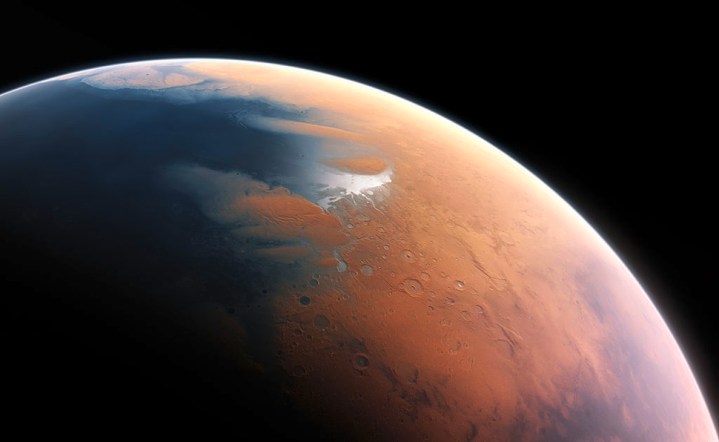
Evidence of two such events was discovered by Alexis Rodriguez, a researcher at the Planetary Science Institute in Tucson, Arizona, along with a team of colleagues who found traces of the catastrophe using satellite imagery. The tsunamis seemingly occurred within a region of the Martian landscape where two major regions — the Arabia Terra highlands and the Chryse Planitia lowlands — bump up against one another. This area has inspired heated debate among researchers over whether ancient Mars featured a northern ocean, as many points where the highlands and lowlands meet seem to resemble a shoreline. If the findings of Rodriguez’s team hold up upon further review, it could finally lead to an answer. The main source of contention focuses on the remains of that potential shoreline, which is not visible in all places it should be, and therefore has caused uncertainty among scientists.
Inspired by the devastating magnitude-9 earthquake and subsequent tsunami that hit Japan in 2011, Rodriguez and his team set out to find evidence of similar events that could have rocked Mars and led to the inconsistency along the northern Martian shoreline.
Using the help of a Mars-orbiting spacecraft, the team pinpointed evidence in the form of two geological formations that show evidence of both an initial impact-generated tsunami 3.4 billion years ago, which would have dropped massive boulders over 300 miles inland, and another some 4 million years later. This second tsunami occurred at a time when the Martian climate had become much colder, so when the massive wave made landfall, it quickly froze on the surface before it had a chance to recede back into the ocean, leaving behind long, jagged spans of ice hundreds of miles long. Much like the frozen surface of Jupiter’s moon, Europa, these long fingers of ice may house evidence of life that could have existed on Mars.
This isn’t the first time tsunamis have been used as an explanation for the missing shoreline of Mars’ long-since dead ocean. The hypothesis was proposed in a 2010 study, which concluded that high-energy tsunamis would have left a mark on the shoreline. Rodriguez’s findings add credence to the idea.
Of course, this doesn’t mean that these events absolutely took place, or that they happened exactly the way Rodriguez’s team suspects. Erosion from wind or other environmental factors — such as landslides — could have worn away at the shoreline once the ocean disappeared, though such an explanation seems unlikely, especially given the long reach of the ice and debris deposits. Furthermore, if the tsunamis did take place, events like earthquakes could have also caused the massive, destructive waves, rather than impacts from comets or meteors.
Either way, these findings open up new avenues of questioning, and help us come to understand our nearest cosmic neighbor a little more.


